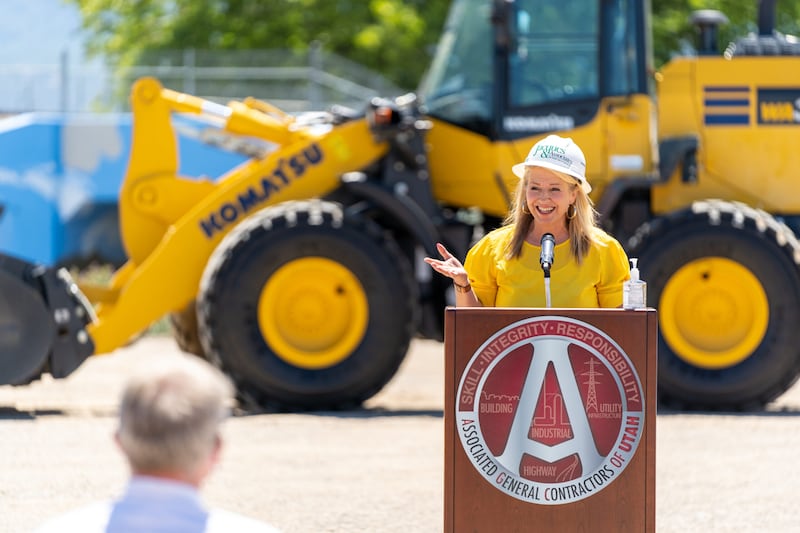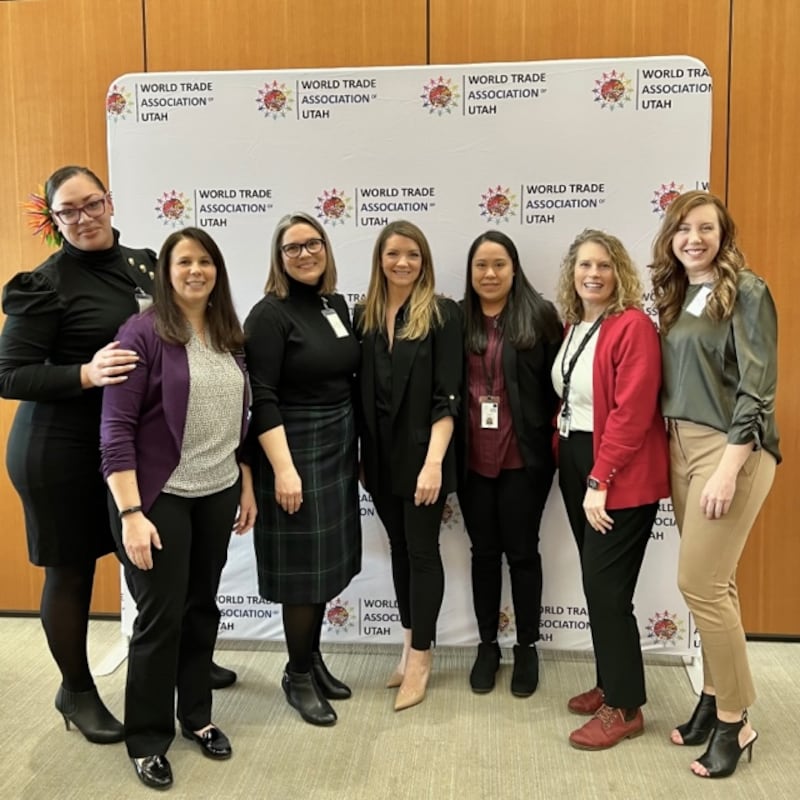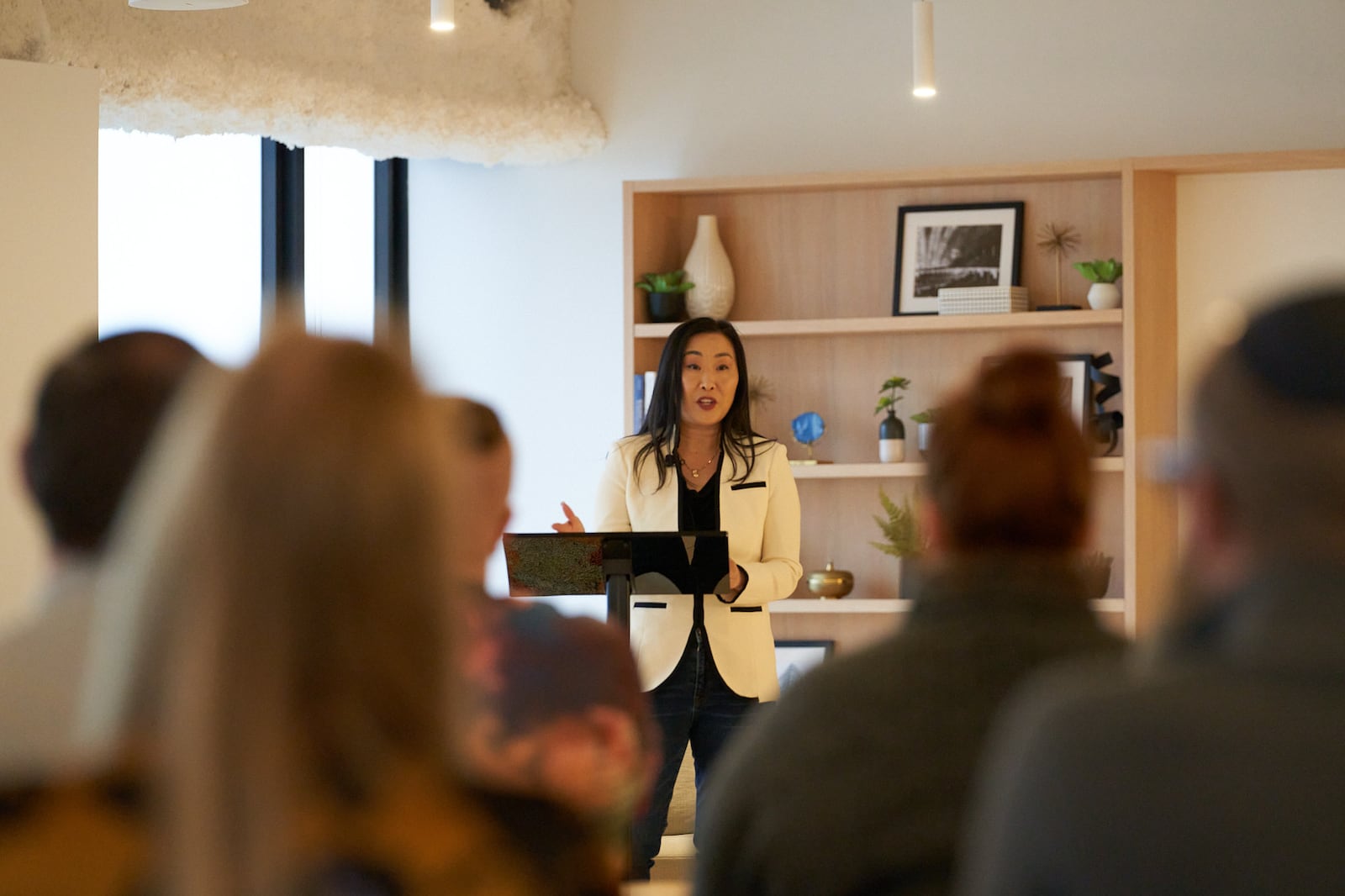Photo courtesy of Sara Jones
This article features hand-picked people & culture experts who will present at Utah Business Forward. With five distinct tracks covering entrepreneurship, international business, marketing, people & culture and strategy, this dynamic event will be hosted on November 16, 2023, at the Grand America Hotel in Salt Lake City. Click here to learn more about the event.
When it comes to modern business, success is no longer solely defined by financial metrics and market dominance. Instead, a thriving organization’s heart lies in its people and culture. But what truly fosters this vital aspect of a company’s identity? Is it the ping-pong tables and snack bars, or does the secret run deeper? Utah’s people and culture experts have unraveled the enigma of culture creation, delving into the intricacies of community building, leadership’s pivotal role, purposeful culture design and expanding hiring pools.
Create community-building opportunities
Jennifer Sorensen, an organizational development architect at Jirah Partners, says, “What’s fascinating to me is that it seems to be less about the snacks and more about what happens when you go to get the snack—the conversations you have with people along the way to get them. It’s about being a part of something. It’s about creating a community at work.”
While free snacks won’t solve a company’s culture problems, recreational areas do provide community spaces where employees can chat and bond. As interpersonal relationships develop, the culture of a company is created. Sorensen gives the example of debriefing with coworkers after a big meeting. When a leader makes a presentation and delivers an important message, employees need time and space to process what was said and what it means to them.
“They’ll have ‘watercooler’ talks with those around them, which is why building that strong, supportive environment is so important. We need the space to work through it,” Sorensen explains.
She goes on to point out that, “Companies tend to focus on the things that are ‘visible’: the office environment, the benefits, the dress code. But so much of what truly builds a culture is what’s unseen or ‘underneath.’ This is what really builds a culture.” While companies cannot force relationships among employees, it is possible to facilitate them. Snacks become the easy first step toward success.
Leadership culture trickles down
Gabb Wireless CEO Nate Randle is one of Silicon Slopes’ most popular LinkedIn contributors and not your typical tech guru on the platform. His posts are less about anything to do with technology and everything to do with people. He uses his network to facilitate help and employment for others instead of spouting off career advice. It is exactly this personality that has helped Randle build a successful culture at Gabb Wireless.
Colin Cole, Gabb’s VP of product says, “It starts at the top, and Nate sets the tone for us. We interact with our people because of the way Nate interacts with us. When you’re with Nate, you have his full attention, and he really listens.”
The Gabb offices definitely have a community feel, too. Coworkers greet each other as old friends, and everyone gets involved to support upcoming projects and efforts. Randle is the heart of it all but still understands the importance of each individual voice, actively involving his executive team in building the company’s culture.
Gabb’s culture pointedly features honesty and transparency. The team has seen that candor from senior leadership results in the same approach throughout the organization and tighter bonds within the company. While challenging at times, upholding these values has always been worth it.
“In the last year, we saw what was going on in the economy, and Nate was very transparent with the company,” says Russ Hannig, VP of growth marketing. “He told employees how we really didn’t want to do layoffs; … he laid everything out and told them, ‘Here’s how we’re going to try to do this.’ He shared with employees there were no guarantees, but this is our goal, and asked everyone for input.”
Jennifer Sorensen | Nate Randle, Photo by Ori Media
Through their honesty and transparency, Randle and his team showed trust while empowering employees to speak up and be part of the solution. Each employee worked to find new ways to cut costs while still delivering value to the company. While many tech companies went through layoffs, Gabb built a culture of greater trust by being transparent and putting employees and their families first.
“It’s impossible to have a safe tech company for kids that doesn’t have a feeling of a safe environment,” Randle says. “You can’t tout protecting kids and families, and then, when it gets really hard, get rid of families.”
Randle says his leadership style can shock people. “We bring them in and let them go figure things out without being in their kitchen trying to tell them what to do,” he says. “I just let them find the best solutions with their team, and we celebrate the moments that matter to the team.”
“Culture by design, not default”
Sydne Jacques, CEO of Next Level Leadership, couldn’t agree more. “If you want to keep your employees and have high retention rates, you need good leadership. You need to create your culture by design, not default. Humanity and caring about people—that’s all you need.”
Companies tend to focus on people who are good at their jobs, often promoting them to leadership positions. “Companies will have a person who’s good at what he or she does and promote them,” Jacques says. “The problem is [the companies] don’t give any leadership training which sets [employees] up to fail. Leadership can be learned, but you must give your future leaders effective tools to teach them how to lead.”
When helping companies develop their young leaders, Jacques often introduces the HIP model. “One of the first things a new leader needs to know how to do is give feedback,” she explains. “The H stands for, ‘I want to have you explain to me what happened.’ Then, I ask, ‘What was the impact of that?’ Finally, ‘What’s the plan moving forward?’ HIP is a tool people can take and use, and it encourages people to give feedback in a positive way. It can be used to correct a negative situation or encourage a positive one.”
The complexity mindset
Sorensen says designing processes with intention is another important consideration. “In business, we don’t actually design for people, we design for new technologies. We design for processes that create efficiencies,” she says. “But humans are multi-faceted and multi-dimensional. … The processes you build should help empower people, not constrain them.”

Photo courtesy of Sydne Jacques
The complexity mindset helps people make sense of what they’re encountering with every interaction and every change that happens. If multiple interactions go south, people begin to feel out of step with the culture—and those little things all add up, according to Sorensen.
“How do we help people engage in their natural design to make sense of things and derive meaning so they can change in a way that is going to honor the culture rather than pull away from it?” she asks. “Workplaces are complex, humans are complex. How do you honor the human first? The processes you build should help empower people, not constrain them.”
Don’t overlook the right people
The culture and design of an organization is only half of the puzzle. The people hired to work within the design are even more important. Shay Baker, program manager of Return Utah, and Sara Jones, CEO of InclusionPro, can tell companies about several often-overlooked sources of experience.
Return Utah is a specific career re-entry program for the State of Utah and the only public career re-entry service in the country. Baker says, “Hiring returners, those who have had career breaks for any reason or for any length of time, is an excellent way to enhance an organization’s culture.”
Baker has firsthand experience with this approach. She had a long and successful career in journalism as a journalist and producer, covering breaking news, elections, sweeps and more, but the job required her to often be on call. When she and her husband started their family, she knew the schedule wouldn’t work. She decided to step away from her career for several years. Later, she wanted to go back but was worried about the gap in her resume.
To help bridge her gap in work experience, she applied for the Utah Department of Commerce’s “returnship” program, a four-month program that reintroduces a potential employee to the workforce. Candidates can apply for a specific role, and the program helps them revamp their résumé with recent experiences. They also receive transitional support, résumé-writing help and networking opportunities.
“Once I completed my four-month returnship, I received an offer to run the program,” Baker says. “It was a transformative experience for me. It changed a lot in my life—my income, my family culture and how I spend my time. It enhanced my professional self; I had missed working.”
Hiring employees with diverse employment histories is a small portion of the overall goal of diversity, equity and inclusion (DEI). No matter the industry—technology, health care, trades—a focus on overall DEI when hiring is a must-have for developing a strong employee base. Companies are encouraged to have a DEI focus as a way to grow their culture through diverse perspectives and viewpoints. Jones helps companies develop DEI strategies.
“Companies have to decide if they want diversity truly embedded in their culture, which means true behavioral change,” Jones says. “True behavioral change can’t happen with one ‘feel good’ event. … In any change management, if you ever want to get the larger group to come along, it’s just slower—much more intentional, much more strategic. You’re getting people who may have preconceived notions and may be resistant. They don’t know what they don’t know, and they may have some fear. … Inclusion goes both ways. This kind of approach takes a longer time, but it’s the only way to create a truly diverse environment.”
The journey toward a vibrant culture and true community of coworkers is challenging and never-ending. Every individual in an organization must work every day to cultivate an environment that enriches employees’ lives—building a community is a community effort. Randle says, “When you find people like that, it takes the pressure off me to feel like I have to take the lead on being the culture. They can be the culture and lead it, too.”

A group of Return Utah’s first participants attend the Women in International Business Conference sponsored by World Trade Association Utah, March 2022. Left to Right: Ilaise Toiolo, Terrah Anderson, Erin Smith, Sabrina Byron, Jessaka Nakai, Terri Okey, and Shay Baker

